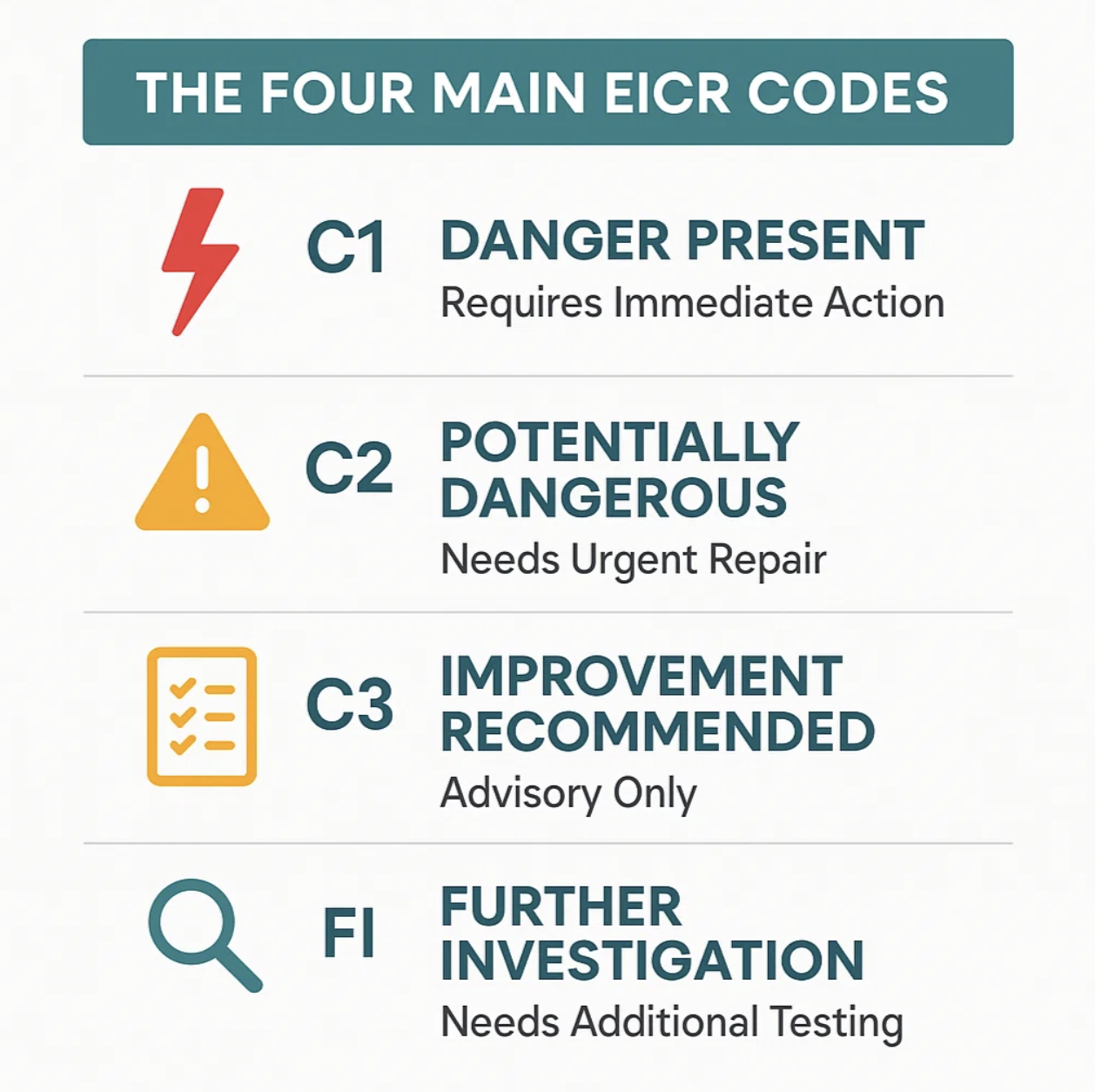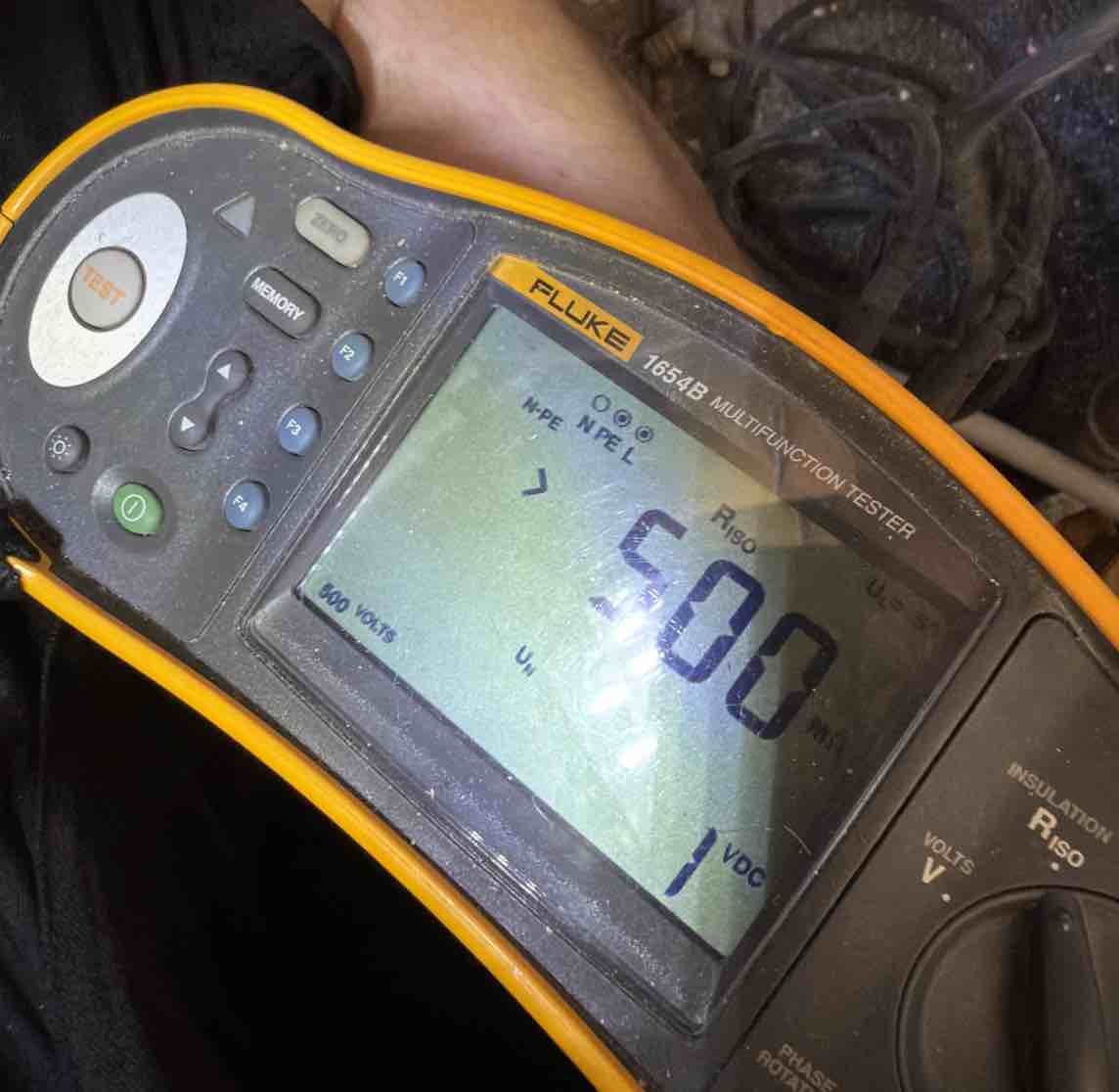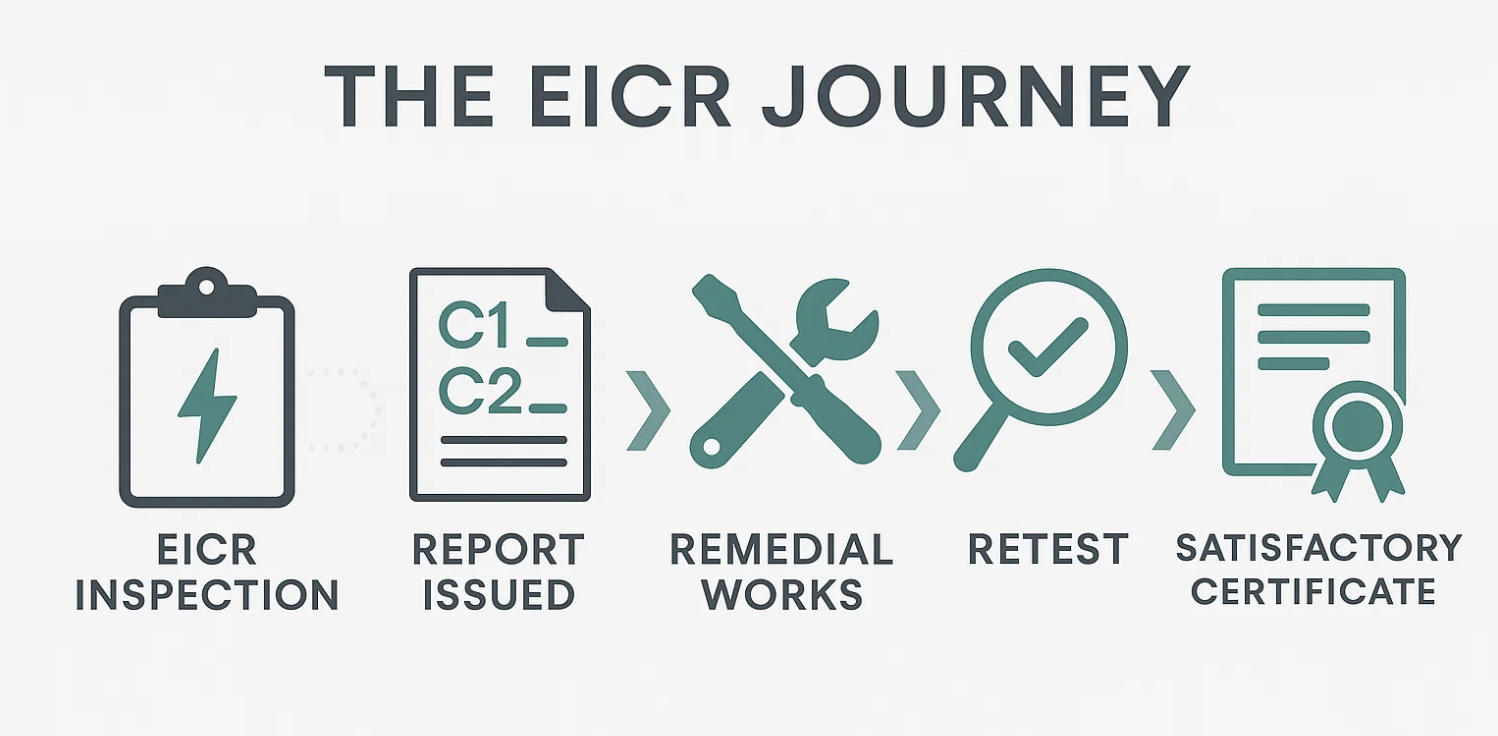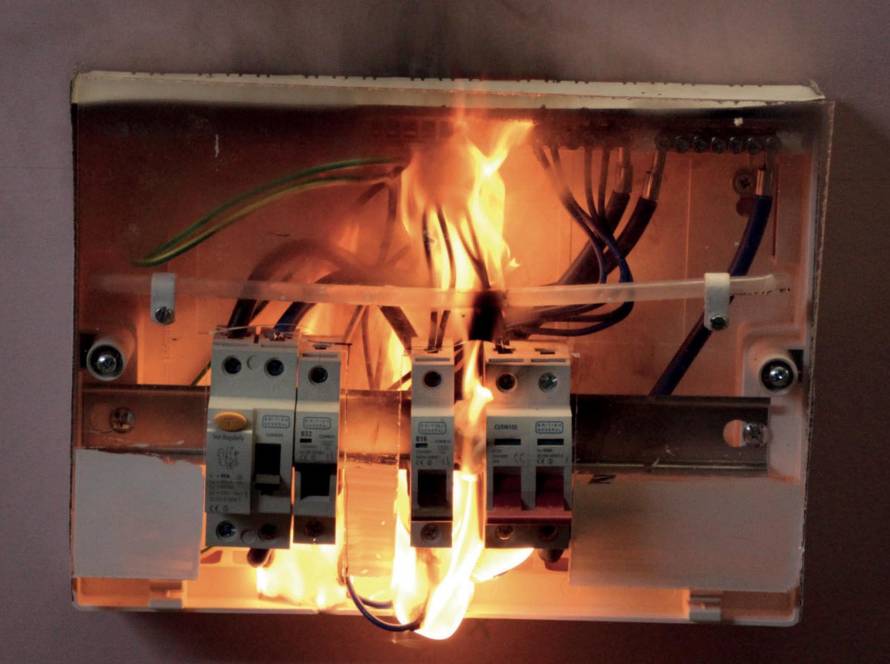Receiving an Electrical Installation Condition Report (EICR) can feel overwhelming, especially when it’s marked as unsatisfactory. But don’t worry this isn’t a fail notice or cause for panic. An EICR is designed to protect you, your property, and anyone who uses it. Most issues highlighted are straightforward to fix, and once completed, your installation will meet the latest safety standards.
At Anova, we help homeowners and landlords every day to interpret their EICRs, carry out remedial works, and restore full compliance, quickly, transparently, and with minimal disruption.
What Is an EICR and Why It Matters
An EICR (Electrical Installation Condition Report) is a professional assessment of your fixed wiring, designed to check whether your property’s electrical system is safe and compliant with BS 7671 Wiring Regulations.
It covers everything from:
- The condition of circuits, switches, and sockets
- Earthing and bonding arrangements
- Protective devices such as RCDs and circuit breakers
For landlords, it’s a legal requirement every 5 years (or with a change of tenancy).
For homeowners, it’s recommended every 10 years — or before buying or selling a property.
The purpose is simple: to identify risks before they become hazards.


Satisfactory vs. Unsatisfactory EICRs
When your inspection is complete, your electrician will issue a report with one of two outcomes:
- Satisfactory: Your installation meets current safety standards, with only minor recommendations (C3s).
- Unsatisfactory: One or more observations have been recorded as C1, C2, or FI — meaning certain parts of your system are unsafe, potentially dangerous, or need further investigation.
It’s important to remember that “unsatisfactory” doesn’t always mean “unsafe right now.”
It simply means your installation needs work to comply with modern safety standards.
Understanding Your EICR Codes
Your EICR includes codes to help you understand the findings. Here’s what they mean:
| Code | Meaning | What It Means for You |
| C1 – Danger Present | Immediate risk of electric shock or fire | Must be rectified immediately. Power may be isolated until repaired. |
| C2 – Potentially Dangerous | Could become unsafe under certain conditions | Requires urgent remedial work to achieve a satisfactory certificate. |
| C3 – Improvement Recommended | Not unsafe but not compliant with the latest regulations | Does not fail the report but is advised to improve at next opportunity. |
| FI – Further Investigation | Safety of the installation cannot be confirmed without additional checks | Must be investigated before a satisfactory EICR can be issued. |
In short: C1, C2, and FI codes must be resolved to achieve a “satisfactory” result. C3s are advisory — think of them as “future improvements.

Why Wiring Regulations Change
The BS 7671 Wiring Regulations — also known as the IET Wiring Regulations — are updated periodically to reflect advances in technology, new research, and lessons learned from incidents.
For example:
- Safer materials and installation techniques become available
- New protective devices (like SPD’s, RCBOs and AFDDs) are introduced
- Fire prevention and energy efficiency standards evolve
So if your older installation was once compliant, it might now need updates simply because safety standards have moved forward.
That’s not a fault of the property, it’s part of ongoing electrical progress.
What Happens After an Unsatisfactory EICR?
If your report is unsatisfactory, the next step is remedial work — repairing, replacing, or upgrading parts of the system that don’t meet current safety standards.
Here’s what typically happens:
- Review the report: Identify which observations are C1, C2, or FI.
- Plan the remedials: Prioritise urgent issues (C1/C2) first.
- Schedule the works: Repairs are carried out by a qualified electrician.
- Retest: Once completed, the installation is rechecked.
- Issue a new certificate: A satisfactory EICR or Minor Works Certificate confirms full compliance.
For landlords, remedial works must be completed within 28 days of receiving an unsatisfactory report (or sooner if specified).
How Anova Can Help
At Anova, we specialise in helping property owners get from unsatisfactory to satisfactory, with transparency, speed, and care.
Our Services Include:
- Full EICR remedial works, carried out by qualified electricians.
- Second opinions on existing quotes — ensuring you’re only paying for necessary repairs.
- Clear communication at every step, including photos and updates through our job portal.
- Detailed, easy-to-understand reports after completion.
We believe in honesty and clarity — no upselling, no unnecessary work, just straightforward solutions.
Staying Compliant, Staying Safe
Electrical regulations will continue to evolve — but with a trusted contractor by your side, staying compliant doesn’t have to be complicated.
By resolving remedial works promptly and keeping your installation up to standard, you protect your property, your tenants, and your peace of mind.
Received an EICR report and feeling unsure what to do next? Contact Anova for professional remedial works, second opinions, or advice on your report. We’ll help you bring your installation up to a safe and compliant standard, quickly and clearly.
📞 Call: 02080516482
📩 Email: info@anovauk.com
💬 WhatsApp: Click the button below




